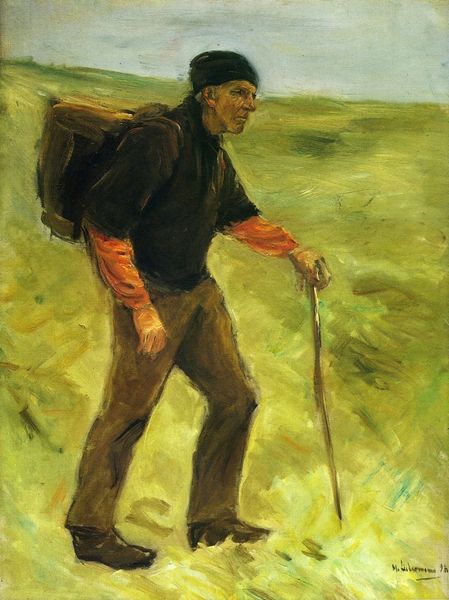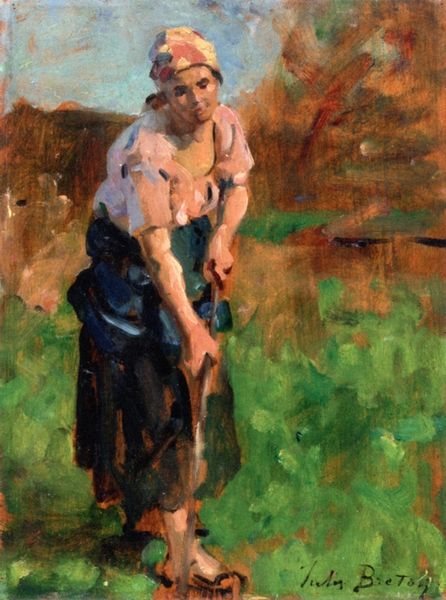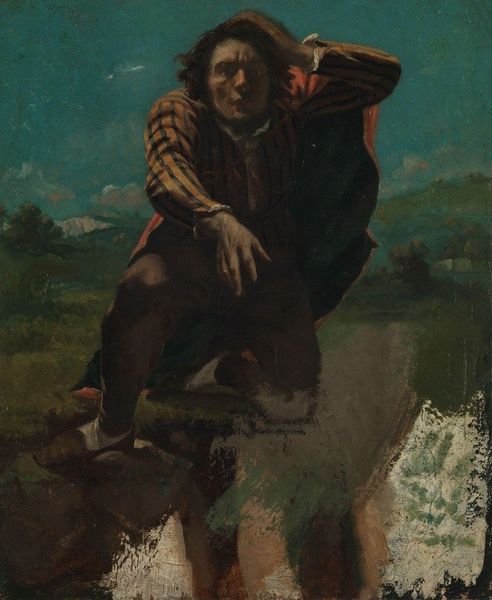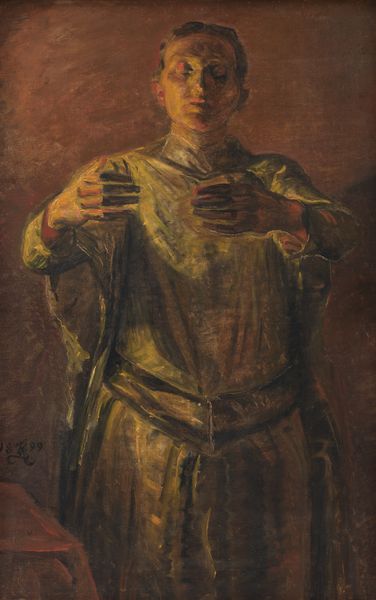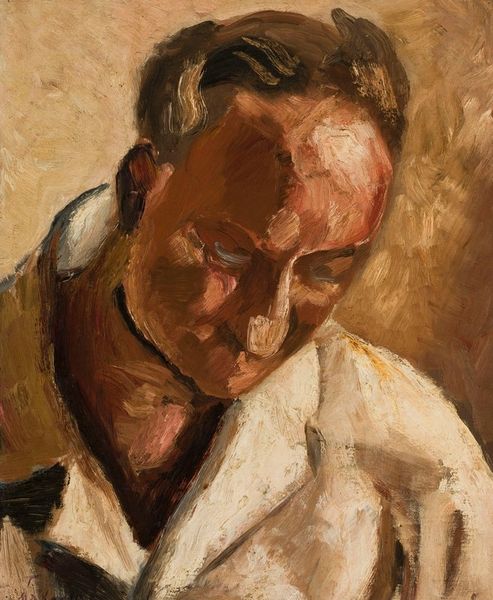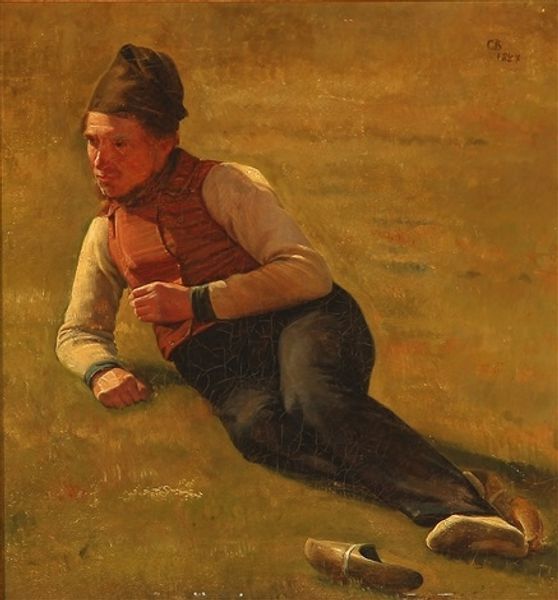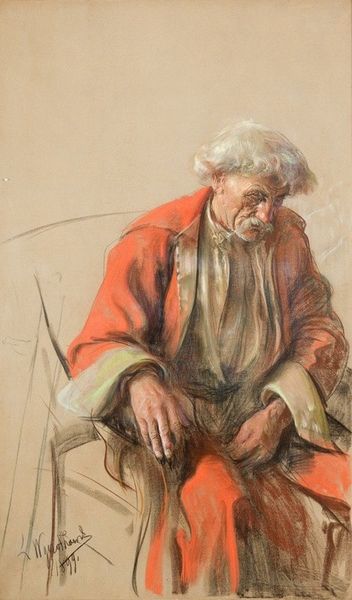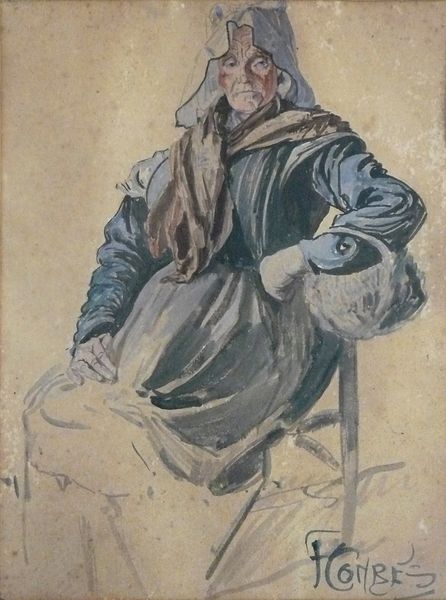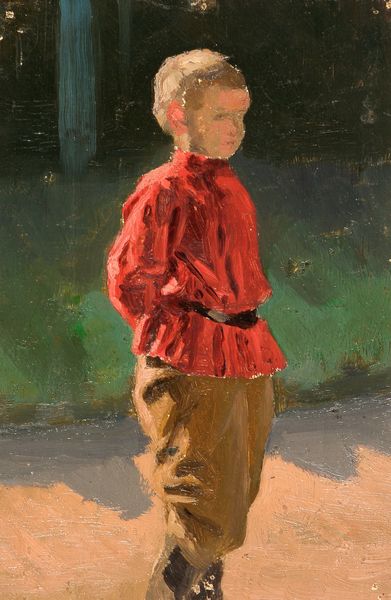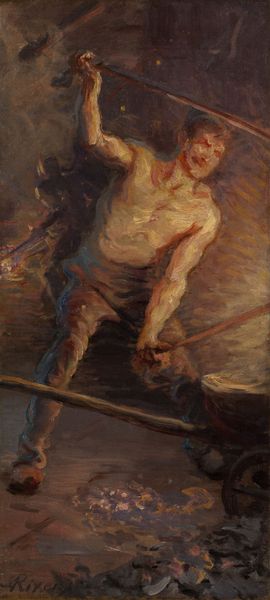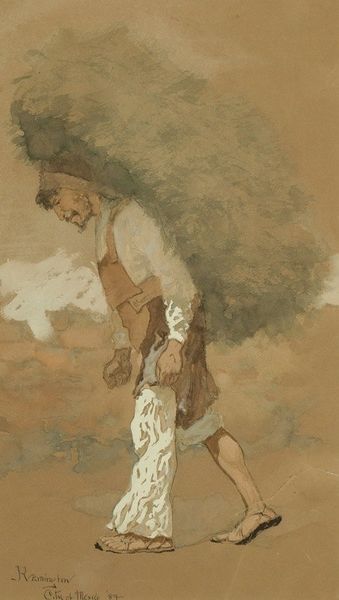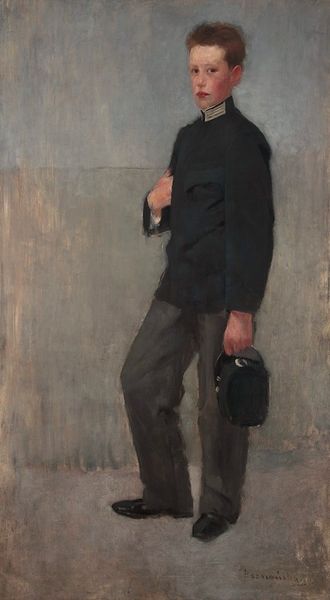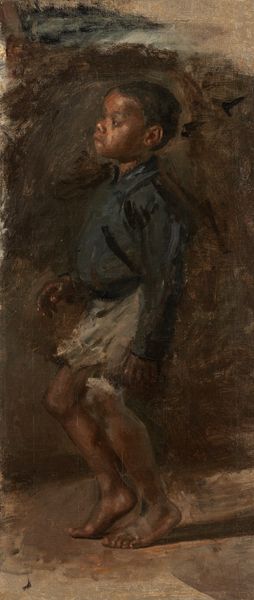
Copyright: Public Domain: Artvee
Curator: Welcome. Before us is Max Liebermann's "Schreitender Bauer," painted in 1894. It depicts a farmer striding through a field. Editor: There's a weight to this. It's not just the bag he carries on his back, but also something in his gaze. He seems burdened by the earth and by time itself. Curator: Liebermann was a key figure in German Impressionism. His art often turned its gaze toward the lives of working-class people, which in itself was quite a statement during a period of increasing industrialization. Editor: It's interesting how Liebermann chooses this subject matter, elevating the peasant figure to this almost heroic scale, yet he doesn’t romanticize him. There’s a realism that grounds it, particularly in the depiction of his worn face. I find it difficult, this mixture of reverence and perhaps a quiet indictment of a social system. Curator: Indeed. The Impressionistic style, while focused on capturing fleeting moments of light and color, here seems secondary to portraying a specific social reality. This man is not placed within an idealized pastoral setting; we perceive labor and strain. Editor: Consider also how movements intersect: it echoes Realism's unflinching gaze. He presents an unvarnished portrayal of labor, of what it means to be a farmer in that era. It prompts questions about land ownership, the impact of industrialization, the class dynamics embedded within a changing society. His red undershirt almost seems like a shout amidst all the earth tones. Curator: Certainly. His palette and brushstrokes draw parallels to contemporaneous French artists. But Liebermann consistently sought to bring those techniques back home to a specifically German experience. One must also note how such a painting served to legitimize certain realities in rapidly shifting cultural and political conditions. Editor: Absolutely. It challenges us to consider how artistic movements aren't merely stylistic choices but reflect wider sociopolitical issues and influence ideological discourses of nationhood, class, and power. Curator: A compelling view. This piece gives us much to consider about both the aesthetic and the political forces at play. Editor: Exactly. It's in understanding this complicated tension where we appreciate the significance of this painting, seeing its message from the past echoed within our present.
Comments
No comments
Be the first to comment and join the conversation on the ultimate creative platform.
